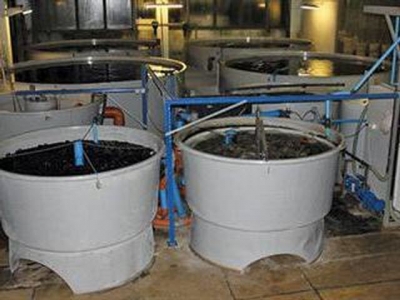Choosing the right aquaculture technology

Successful aquaculture is all about making a profit. Make sure your system is affordable and appropriate
A concrete-edged earth pond with monk-type outlet and pole for an auto-feeder.Photo: Nicolas James
The variables involved in successful aquaculture include the market value of the product, the quantity produced, the investment capital available, skills levels, and of course, the technology used. On a recent tour to view fish farms in the northern regions of South Africa, the wide range of technology used in aquaculture was evident. It ranged from simple earth ponds on a small farm in Venda, to a high-tech, multi-million rand re-circulating system near Pretoria.
Pond aquaculture requires a much larger ‘footprint’ than re-circulating aquaculture systems (RAS). The technology is usually limited to ensuring that clean and abundant water is constantly available, and the feeding and harvesting methods of the fish are appropriate to the scale of the farm. On small pond farms of up to 5ha, manual feeding and harvesting will probably be utilised, while on larger farms the cost of automatic feeders, mechanical stocking and mechanised methods of catching and processing the fish can be justified.
The most common form of tilapia culture in South Africa is in re-circulating systems under greenhouse tunnels. These tunnels can vary from 30m x 8m to 50m x 15m, with claimed production of up to 69t per tunnel annually. However, some of these systems have such rudimentary sediment removal and filtration systems it seems doubtful that even 10t/ year would be produced. Others are so over-engineered that interest repayments alone must cripple their viability.
Middle ground
There has to be a compromise between unaffordable ‘high-tech’, and inefficient or ineffective ‘low-tech’. By their nature, tunnel systems have limited surface areas, as every square metre is expensive and thus valuable. The floor area should therefore be fully utilised, while keeping the design user-friendly. Some designs make it almost impossible to work because of restricted space. Yet using round tanks in the belief that only they can self-clean will waste 40% of the tunnel’s floor area. Modular, plastic tanks (often black), may look impressive, but they are not user-friendly or cheap.
The fish are not easily visible in a black tank, and the system is made entirely of plastic, so is prone to rapid pH variations, as there is nothing to buffer the pH. In addition, the biofiltration causes progressive acidification. When considering filtration technology, there is no substitute for ‘volume’. Even the most efficient off-the-shelf drum sediment removers, bio-drums, protein skimmers and other expensive devices cannot remove the final product of filtration, nitrates. Dilution through water changes is essential, unless filter volume is very large, and in the order of more than 30% of grow-out volume.
Filtration systems
The question is whether to choose small, highly-stressed, high-tech filtration with high running costs, or simple, large-volume, robust, serial sediment removal and biofiltration at less than half the cost. If you are serious about making money from tilapia aquaculture, choose the latter.
Nicholas James is an ichthyologist and hatchery owner.
Related news
 Small scale fish farming
Small scale fish farming With government assistance, many rural small-scale fish farmers could turn their operations into viable enterprises.
 Cold-tolerant tilapia can weather winter’s chill
Cold-tolerant tilapia can weather winter’s chill Taking tilapia cold tolerance ranges into account shows how just a few degrees can make for a worry-free season.
 Moving fish
Moving fish Special care needs to be taken when moving fish in order to minimise their stress levels and thus prevent unnecessary deaths.